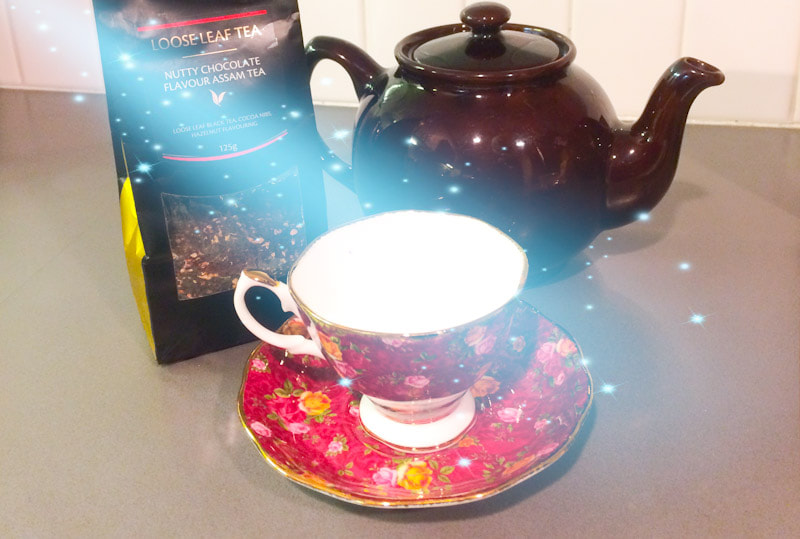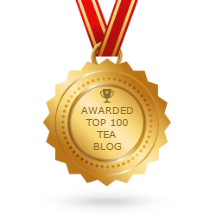|
Tea. To many it still conjures images of ladies in floral dresses and big hats or zen masters pondering the mysteries of the universe as in the case of Thor: Ragnarok. When Doctor Strange offers Thor tea he responds: Thor: I don’t drink tea Then a huge magically refilling beer glass appears in Thor’s hand because everyone clearly knows that beer is a more appropriate drink for a man who calls himself the God of Thunder. Ahem. (great fun film, by the way) Now, I love beer. I have nothing against it, but ‘back in the day’ tea had a dark, criminal underbelly. Yes, the nobility and the wealthy drank it first, but as with anything perceived as exclusive everyone started to want it. So demand gave rise to everything from substandard knockoffs to black market trade. Let’s look back to the 18th century. Britain became ravenous for tea more than any other western country of size. “Recorded imports into Britain rose from 13,082 lbs. in 1699 to 1,241,629 lbs. in 1721. By 1750 the total was 4,727,992 lbs.” 1 But that is only the legal recorded amounts. The cost of tea was too much for most households to afford, especially with the duties imposed by the government and the East India Company monopoly on the tea trade. This unmet demand resulted in violent, prolific, smuggling. Some gangs that engaged in the tea smuggling trade went so far as torturing and killing informants and customs workers who tried to bring them down. Yeesh. It’s like that spoof of “Breaking Bad” that some of the cast of “Downton Abbey” did on Colbert called “Breaking Abbey” where tea replaced meth. It is hilarious, but when you realize how like the drug trade parts of tea history are it is…slightly less hilarious. If I saw a biker gang drink tea now I would not think it strange (Sons of Anarch-tea? Yeah, that’s an image. )
The general public wanted tea but were against the cost of the legal version of it so millions were complicit in the smuggling trade 2. The cheaper tea was often not much real tea at all. To keep the cost down it was often cut with anything from leaves of other plants, used tea leaves purchased from servants and even sheep’s dung 3. Even dangerous dyes were used, like copper dyes in inferior green tea, which may have added to the British switch from green tea to more black tea. A fine was imposed for such adulterations but it was difficult to impose on tea sold under the radar. It kind of makes that Versace knockoff you got from a NYC street vendor seem mild by comparison. Unless you intend to eat it, of course. I suggest you don’t. You don’t know where that thing has been. In 1747 there was a large drop in the tax on tea which caused legal imports to Britain to roughly triple and smuggling to shrink. But by the 1770s smuggling swelled with large armed ships with large crews running the game. During this time historians estimate that 4-7.5 million lbs. of tea was smuggled in exceeding the recorded 4-5 million legal lbs 4. Americans in the colonies were digging tea too and demand was increasing. As they were still under British rule the tea came through Britain for the first half of the 18th century. This tea came with heavy cost as the import duties paid in Britain were passed on to the cost in America. Because of this it is estimated that ¾ of all the tea imported to the colonies in 1760 was smuggled in 5. Then it got even more interesting. In 1767 there was a law passed that let the import duty on tea sent to America to be repaid which slowed smuggling for a time 6. Then in 1773 the East India Company was allowed to export straight to the colonies and would include a threepenny tax per lb. As Britain had already taxed American newspapers, bills and legal docs prior and then initiated taxes on lead, paint, paper, glass and now tea 7 it is fair to say America was getting tetchy. It was the Tea Act of 1773 that began the rumblings which would lead to the infamous Boston Tea Party. It was felt that Britain was attempting to secure greater and greater power over American interests. Customs officers had to be guarded by British troops. Apparently a man died and protests erupted when troops fired into a mob in Boston in 1770 (sound familiar?). The people began to organize preventing ships from docking and attacking tea warehouses. It was like tea had become a symbol of the establishment that the angry public wanted to bring down. In the book there is an interesting log entry from the journal of a mate named Alexander Hodgdon who served on the ship the Dartmouth which arrived in Boston: “Between six and seven o’clock this evening came down to the wharf a body of about one thousand people. Among them were a number dressed and whooping like Indians. They came on board the ship, and after warning myself and the Customs-House Officer to get out of the way, they unlaid the hatches and went down into the hold, where there were eighty whole and thirty-four half chests of tea, which they hoisted on deck, cut the chests to pieces, and hove the tea all overboard, where it was damaged and lost.” 9 This was the Boston Tea Party, which resulted in the destruction of all tea on three ships that had arrived in Boston. The tea that had arrived in Charleston was left to rot and tea that had been sent to Philly and NYC was sent back to London. It was Boston that took the biscuit, though, sending a strong message to Britain who responded with closing Boston harbor and attempts to exert control that resulted in the war that led to American independence. No wonder coffee gained a foothold here. Tea was somewhat demonized for a time as a traitor’s drink. Quite a ride for a beverage sipped in some of the West’s most opulent hotels and enjoyed around the table of many a common home today. Tea - there is a world of history in your cup. The source for this post is an interesting book written by a man who began his work in the tea trade at the age of 21 in 1960. The book is: Tea: Addiction, Exploitation and Empire, by Roy Moxham. This post touches on just a piece of what the book covers. If you are interested in tea history I recommend it. Here are the pages I drew from: Moxham, Roy (2003) Tea: Addiction, Exploitation and Empire, New York, Carroll & Graf 1 pg 24, 2 pg 25, 3 pg 29, 4 pg 26-27, 5 pg 46, 6 pg 46, 7 pg 47, 8 pg 47, 9 pg 49 This is not a sponsored post Comments are closed.
|
AuthorCassandra Vincent CategoriesAll Classic Tea Flavored And Funky For Love Of Tea Herbs Infusions Lifestyle And Health Matcha Meditative And ASMR Sessions Recipes And Uses Specialty Tea Brands Spices Tea Accessories Tea Adjacent Tea And... Tea And A Laugh Tea And Art Tea And Holidays Tea And Music Series Tea And TV Tea Around The World Tea Cocktails Tea Events Tea In Film Tea In History Tea Innovations Tea Pros Tea Shops/Shops With Tea Tea Types Teaware |


 RSS Feed
RSS Feed